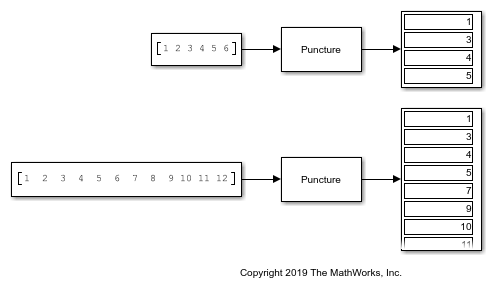Puncture
Output elements that correspond to 1s in binary puncture vector
Libraries:
Communications Toolbox /
Sequence Operations
Description
The Puncture block creates an output vector by removing selected elements of the input vector and preserving others. The block determines which elements to remove and preserve by using the binary Puncture vector parameter. The block repeats the puncturing pattern, as necessary, to include all input elements. The preserved elements appear in the output vector in the same order in which they appear in the input vector.
Examples
Ports
Input
Output
Parameters
Block Characteristics
Data Types |
|
Multidimensional Signals |
|
Variable-Size Signals |
|
Extended Capabilities
Version History
Introduced before R2006a
